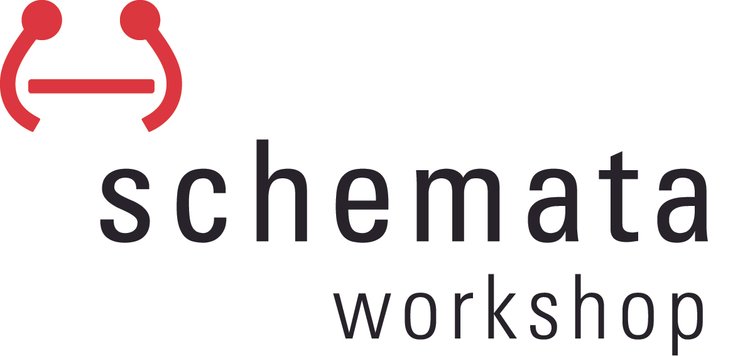The model minority myth is a damaging and dividing stereotype that all Asian Americans are universally intelligent, hard-working, and prosperous which has led to their success and achievement of the American Dream. This myth perpetuates the idea that Asian Americans are socially, politically, and economically more successful than other communities of color and thus a model for all minorities in America.
Making & Taking Up Space (MATUS) “Dismantling the Model Minority Myth promotional graphic.
In May 2024, in celebration of Asian American and Native Hawaiian/Pacific Islander (AA+NH/PI) Heritage Month, the National Organization of Minority Architecture Students - University of Washington Chapter (NOMAS UW) in collaboration with the Asian American Pacific Islander Design Alliance (AAPIDA) hosted an event series: Making & Taking Up Space (MATUS) “Dismantling the Model Minority Myth”.
This series of weekly events focused on architecture and other forms of creative work. Various events throughout the month were geared towards dismantling the model minority myth. In part, it was developed in response to evolving values and the growing student dissatisfaction with the lack of diversity reflected in the curriculum and faculty demographics within the UW College of Built Environments (CBE).
MATUS seeks to create safe spaces for AA+NH/PI and BIPOC-identifying students by providing opportunities to meet with professionals with lived experiences to foster growth, learning, and awareness. MATUS events provide inspiration and guidance to the next generation of architects and designers by bridging connections between students and other AA+NH/PI and BIPOC-identifying professionals who have walked similar paths, faced similar challenges, and ultimately succeeded.
MATUS 2024 by the numbers:
8 events in the month of May
35 professional volunteers recruited for a portfolio review and mock interview event: 30 student participants.
150+ attendees for Q+A Speaker Panel, Happy Hour Social, and Finale Discussion
$6,100 raised.
In line with their priorities of advancing global equity, MATUS committed half of their merchandise proceeds to the support those affected by the ongoing conflict in Palestine.
Schemata Workshop firm tour and discussion for MATUS — May 10th 2024.
Schemata's involvement:
Schemata Architectural Designer, Caitlin Truong, was the founder and principal organizer of MATUS.
To support the efforts of MATUS, Schemata Workshop became a Title Sponsor and hosted a tour of the firm for students. Participants also had the opportunity to sit down with Principal Grace Kim and learn about her experience in the industry as a Korean American woman.
Shweta Sinha (Associate at Schemata) was a panelist for "Reclaimed Narratives: Reflections of the Asian American Experience in Architecture + Design" event, where she shared her reflections on the past and present as an Indian woman in the design industry.
Architectural Designer, Alex Lin, volunteered as a portfolio reviewer and mock interviewer, encouraging students as they prepare to enter the profession.
Schemata is supportive of our staff's external initiatives, so we welcomed Caitlin's invitation to sponsor MATUS. As an Asian American leader, Grace especially appreciated Caitlin's leadership in highlighting an unspoken truth in our society - Asian Americans endure a lot of microaggressions and often succumb to an inadequate myth of being a “model minority”. Not all Asian Americans, Native Hawaiians and Pacific Islanders share the same experiences or privileges associated with this trope. And more importantly this myth has a profound impact on personal perceptions of identity and internal racist ideologies. This was a topic and series of events that made sense for Schemata to sponsor, and we appreciated the many ways in which our staff stepped up/showed up to support Caitlin and the NOMAS chapter. As a BIPOC and women led company, we know representation matters. Not just by providing resources to sponsor an event, but also by showing up in person to demonstrate to the next generation of architects that there is a place for them, and that people that look like them hold a variety of positions within our profession.
Panelist and organizers of MATUS "Reclaimed Narratives: Reflections of the Asian American Experience in Architecture + Design" — May 1st, 2024.
Top Row: Panelist ( Sonia-Lynn Abenojar, James Fung, Angela Yang (Moderator), Nikki Sugihara, Shweta Sinha, Taehyung Kim, Kan Paprakhon)
Bottom Row: Founders and organizers of MATUS (Hannah Hu, Eunice Chen, Carol Zeng, Caitlin Truong, and Jodi Van)
Schemata's hope for the Asian community/BIPOC community in our industry:
Schemata Workshop is actively doing to the work to become an anti-racist company.
That starts with identifying the racist systems that we are all operating in and the racist tropes that society tries to assign to each of us. We have conversations about this regularly. By supporting events like MATUS, we are helping all of us do the work. While BIPOC centered events may be geared for BIPOC communities to establish their presence and express their individual identities and stories, we hope that White allies will also attend these events to expand their perceptions and understanding. It is our hope that BIPOC students and architects continue to seek out leaders and mentors who look like them, and that those mentors keep their eye out for opportunities to engage and uplift the younger members of the profession.












